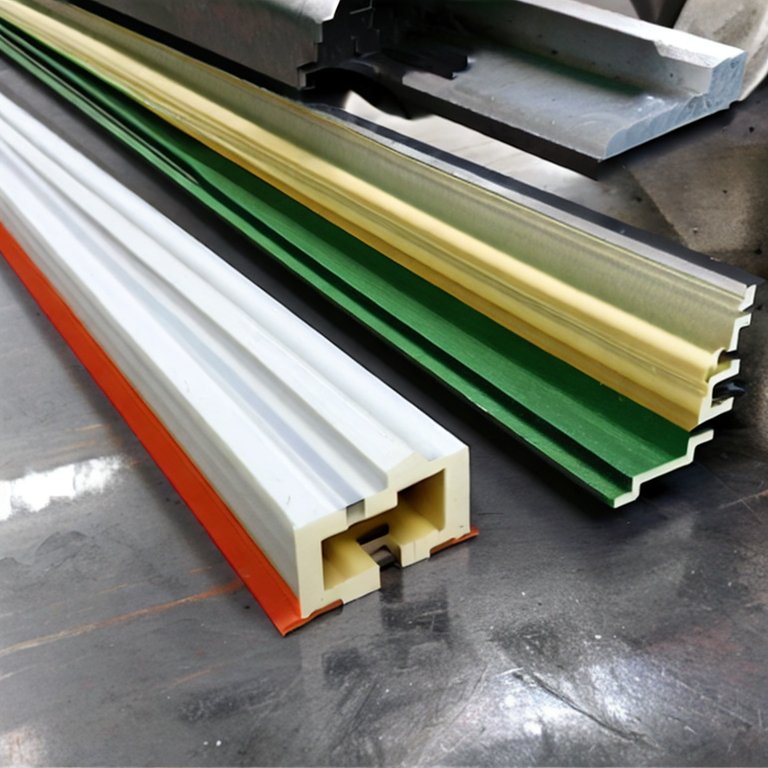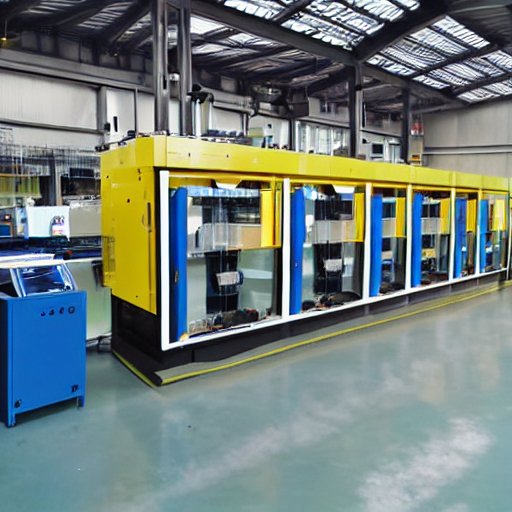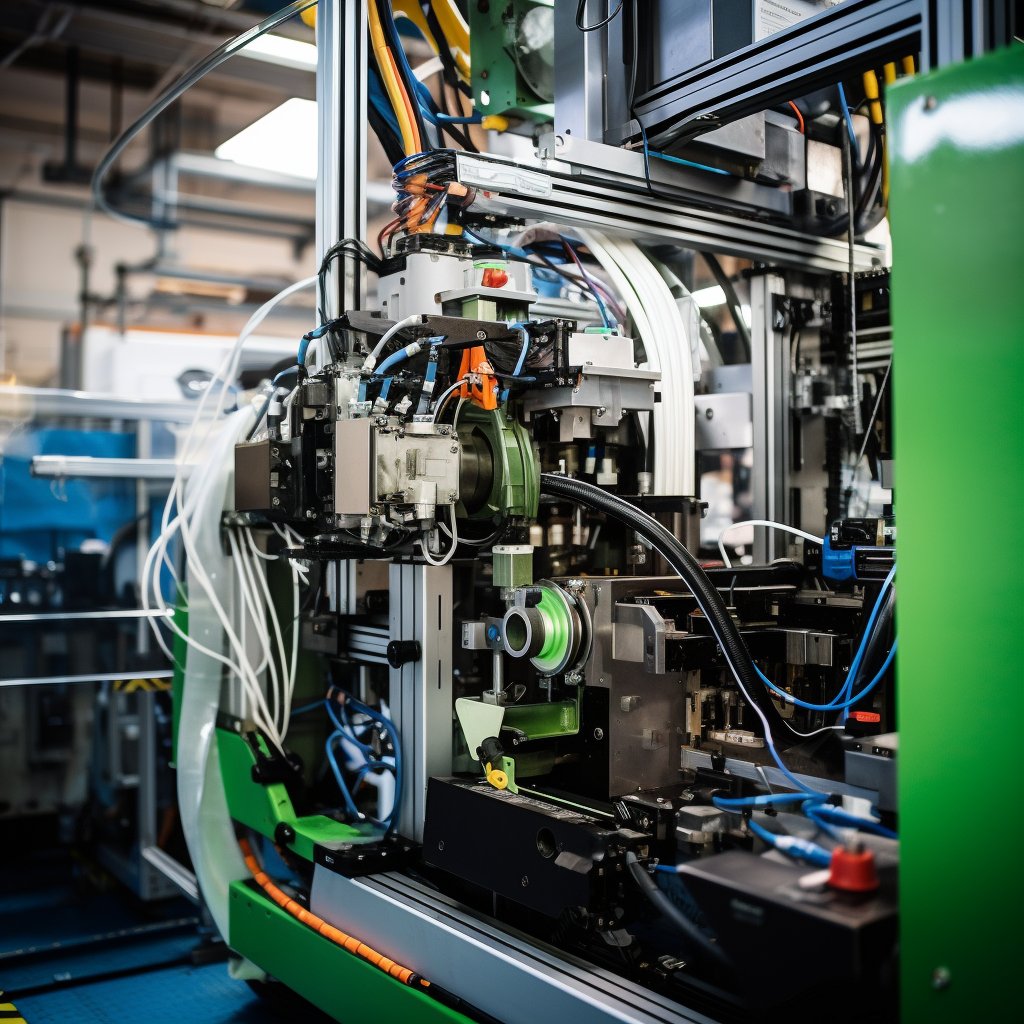Rotational moulding is a manufacturing process to create hollow plastic products of various shapes and sizes. It involves the use of plastic materials that are melted and rotated inside a mould. Rotational moulding plastic is widely used in manufacturing due to its durability, flexibility, and cost-effectiveness.
Rotational moulding plastic, also known as rotomoulding, is a manufacturing process that has been used for decades to produce a wide range of plastic products, from toys and storage containers to industrial parts and medical equipment. This process offers a cost-effective and versatile method of manufacturing large and complex parts, making it an ideal choice for many industries. However, with growing concerns about the environmental impact of plastic waste, the industry is under pressure to find more sustainable and eco-friendly solutions.

Types of Rotational moulding Plastic
Several plastic materials can be used in rotational moulding. Polyethene (PE), polypropylene (PP), and PVC plastisols are the most common types. Other materials that can be used include nylon, polycarbonate, and acrylonitrile butadiene styrene (ABS). These materials are chosen based on their durability, strength, and flexibility.
Polyethene is the most widely used rotational moulding plastic. It is a thermoplastic polymer that can be easily moulded and has excellent chemical and impact resistance. It is commonly used to manufacture water, fuel, and large containers.
Polypropylene is a high-strength plastic that is resistant to heat and chemicals. It is commonly used in manufacturing automotive parts, toys, and household appliances.
PVC plastisols are used to manufacture soft plastic products such as toys, automotive parts, and artificial leather. They are also used in the manufacturing of electrical cables and flooring.
Applications of Rotational moulding Plastic
Rotational moulding plastic is widely used in various industries due to its versatility and durability. Some of the industries that use rotational moulding plastic include:
- Automotive: Rotational moulding plastic is used to manufacture automotive parts such as fuel tanks, air ducts, and interior components.
- Agriculture: Rotational moulding plastic is used to manufacture water tanks, chemical storage tanks, and fertiliser tanks.
- Toys: Rotational moulding plastic is used to manufacture toys such as playground equipment, ride-on toys, and figurines.
- Household appliances: Rotational moulding plastic is used in the manufacturing of laundry hampers, trash cans, and storage containers.
- Medical: Rotational moulding plastic is used in the manufacturing of medical equipment such as wheelchairs, hospital beds, and mobility aids.
Material Properties of Rotational moulding Plastic
The material properties of rotational moulding plastic vary depending on the type of plastic material used. Generally, rotational moulding plastic has the following properties:
- Durability: Rotational moulding plastic is highly durable and can withstand extreme weather conditions, chemicals, and impact.
- Lightweight: Rotational moulding plastic is lightweight, making it easy to transport and install.
- Flexibility: Rotational moulding plastic can be moulded into various shapes and sizes, making it flexible for use in various applications.
- Cost-effective: Rotational moulding plastic is cost-effective compared to other plastic manufacturing processes, making it a popular choice for manufacturing various products.
Future Trends in Rotational moulding Plastic
The future of rotational moulding plastic is focused on sustainability and recycling. The plastic industry is under pressure to reduce the amount of plastic waste produced and to use more sustainable materials. This is seen as an effective way of reducing plastic waste while still producing high-quality plastic products.
There is also a growing trend towards using biodegradable plastic materials in rotational moulding. Biodegradable plastics are designed to decompose in the environment over time, reducing the impact of plastic waste on the environment.
The future of the rotational moulding plastic market is expected to be positive, with a growing demand for durable and cost-effective plastic products. The market is expected to grow significantly, driven by the increasing demand for plastic products in various industries.
However, the market is also expected to face challenges, particularly in terms of sustainability and environmental impact. The plastic industry is under increasing pressure to reduce plastic waste and use more sustainable materials. The future of rotational moulding plastic is expected to focus on sustainability and recycling, with a growing trend towards using recycled and biodegradable plastic materials.
Overall, the rotational moulding plastic market is expected to continue to grow in the coming years, driven by its cost-effectiveness, versatility, and durability. However, the industry will also face challenges in terms of sustainability and environmental impact, requiring a focus on recycling and the use of more sustainable materials.
Market Price Developments
The price of rotational moulding plastic varies depending on the type of plastic material used, the complexity of the product, and the manufacturing process. Polyethene (PE) is the most commonly used rotational moulding plastic, and its price has been relatively stable. However, the price of other materials, such as polypropylene (PP) and PVC plastisols, can fluctuate based on market demand and availability.
Global Impact
Rotational moulding plastic significantly impacts the global economy, particularly in the manufacturing industry. The process creates a wide range of products, from automotive parts and toys to medical equipment and household appliances. As a result, the demand for rotational moulding plastic is expected to increase in the coming years.
However, the production and disposal of plastic waste significantly impact the environment. The plastic industry is under pressure to reduce the amount of plastic waste produced and to use more sustainable materials. The future of rotational moulding plastic is focused on sustainability and recycling, with a growing trend towards using recycled and biodegradable plastic materials.
Rotational moulding’s impact on recycling
When it comes to rotational moulding plastic, recycling is an important aspect to consider. The plastic industry is under pressure to reduce the amount of plastic waste produced and to use more sustainable materials. The future of rotational moulding plastic is focused on sustainability and recycling, with a growing trend towards using recycled and biodegradable plastic materials.
Recycling rotational moulding plastic involves collecting and processing plastic waste, which is then reused to create new plastic products. This process helps to reduce the amount of plastic waste that ends up in landfills and the environment. It also helps to conserve natural resources, reduce energy consumption, and reduce greenhouse gas emissions.
One of the challenges in recycling rotational moulding plastic is the presence of contaminants, such as dirt, metal, and other types of plastic. These contaminants can affect the quality of the recycled plastic and make it more difficult to reuse. To address this issue, manufacturers are implementing advanced recycling technologies, such as melt filtration and purification systems, to improve the quality of recycled plastic.
In addition, there is a growing trend towards using biodegradable materials in rotational moulding plastic. Biodegradable plastic is designed to break down in the environment, reducing the impact of plastic waste on the environment. Manufacturers are exploring the use of biodegradable materials, such as PLA (polylactic acid), in rotational moulding plastic to reduce the environmental impact of plastic products.
Overall, the future of rotational moulding plastic is focused on sustainability and recycling. The industry is under pressure to reduce plastic waste and use more sustainable materials. Recycling and the use of biodegradable materials are key trends in the industry, as manufacturers work to reduce the impact of plastic waste on the environment.
Advantages of Rotational moulding Plastic:
- Cost-effective: Rotational moulding plastic is a cost-effective manufacturing process, making it an ideal choice for producing large, complex parts.
- Versatility: The process can be used to create a wide range of products, from automotive parts and toys to medical equipment and household appliances.
- Durability: Rotational moulding plastic products are durable and long-lasting, able to withstand harsh environmental conditions.
- Customisation: The process allows for customisation of product design and size, providing flexibility for manufacturers.
Disadvantages of Rotational moulding Plastic:
- Limited precision: The process is less precise than other plastic manufacturing processes, making it less suitable for parts with high tolerance requirements.
- Long cycle times: The process can have long cycle times, especially for large parts, which can impact production rates.
- Limited materials: The process is typically used with polyethylene, limiting the range of materials that can be used.
Rotational moulding:
In conclusion, rotational moulding plastic is a cost-effective and versatile manufacturing process that has been used for decades to produce a wide range of plastic products. While there are concerns about the environmental impact of plastic waste, there are also opportunities to make the process more sustainable through the use of biodegradable materials and recycling technology. As the industry continues to evolve, we expect to see new trends and innovations emerge that will further improve the efficiency and sustainability of rotational moulding plastic. We hope this article has provided valuable insights into this manufacturing process and its relationship with recycling and the environment.






